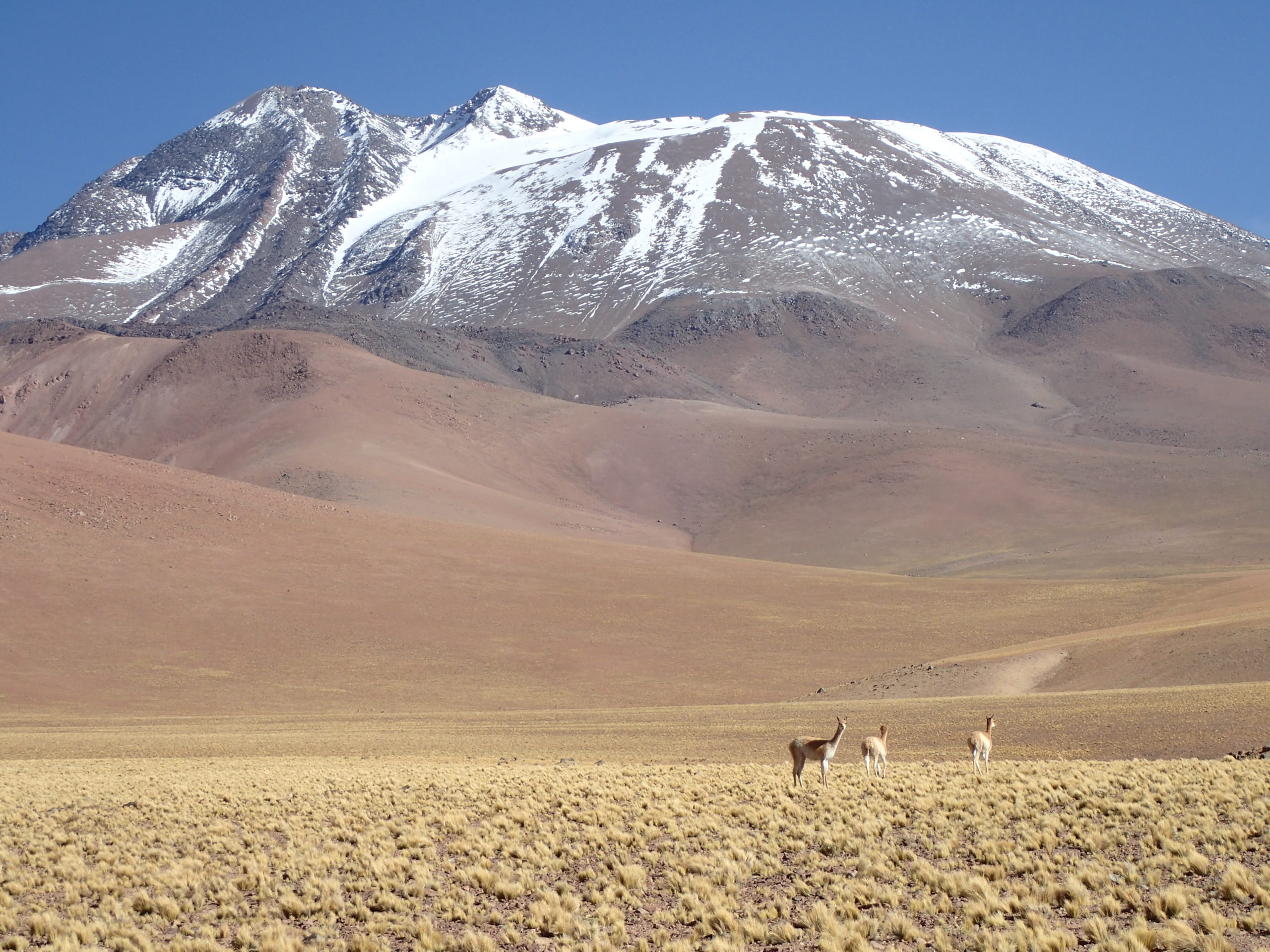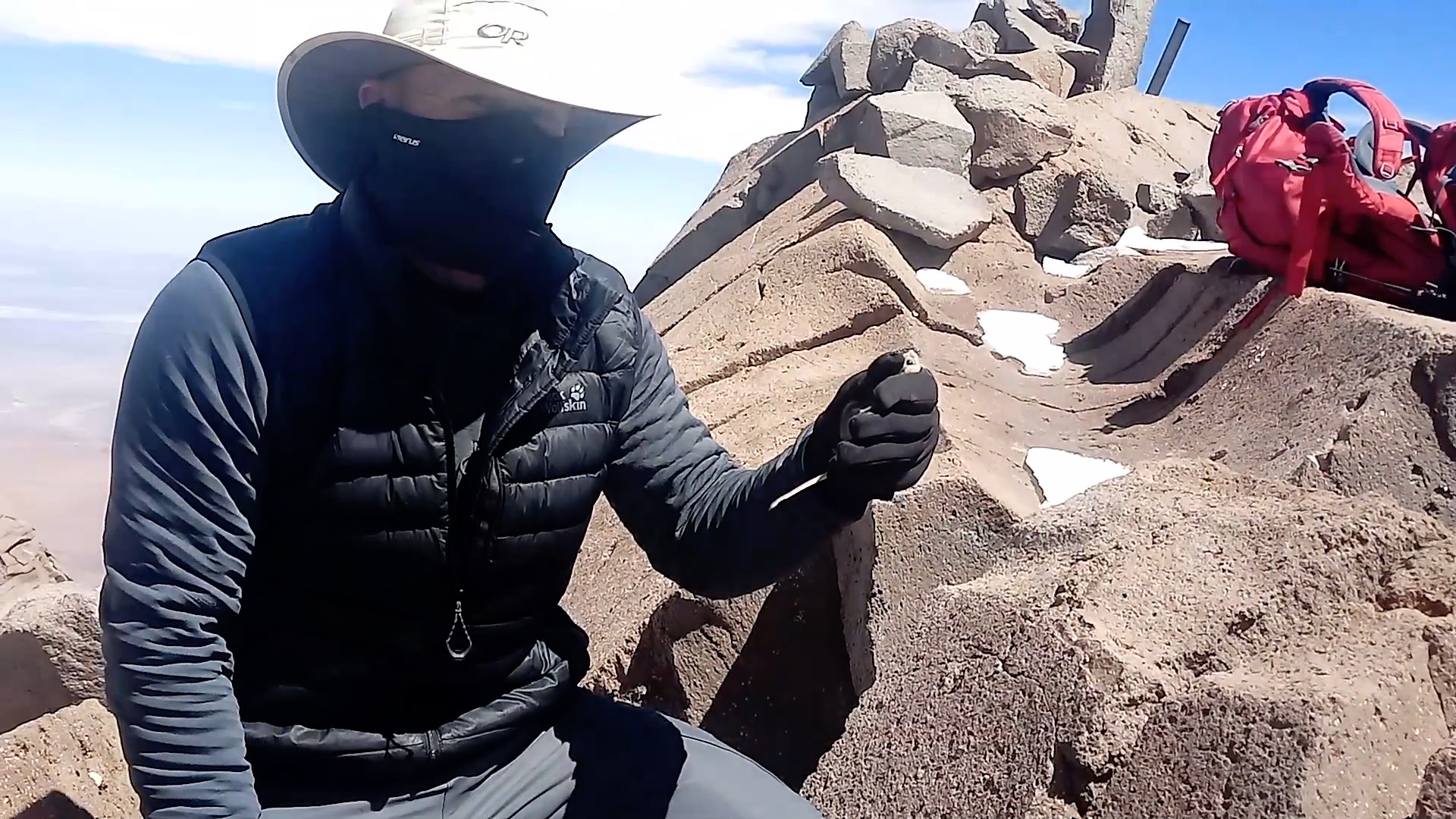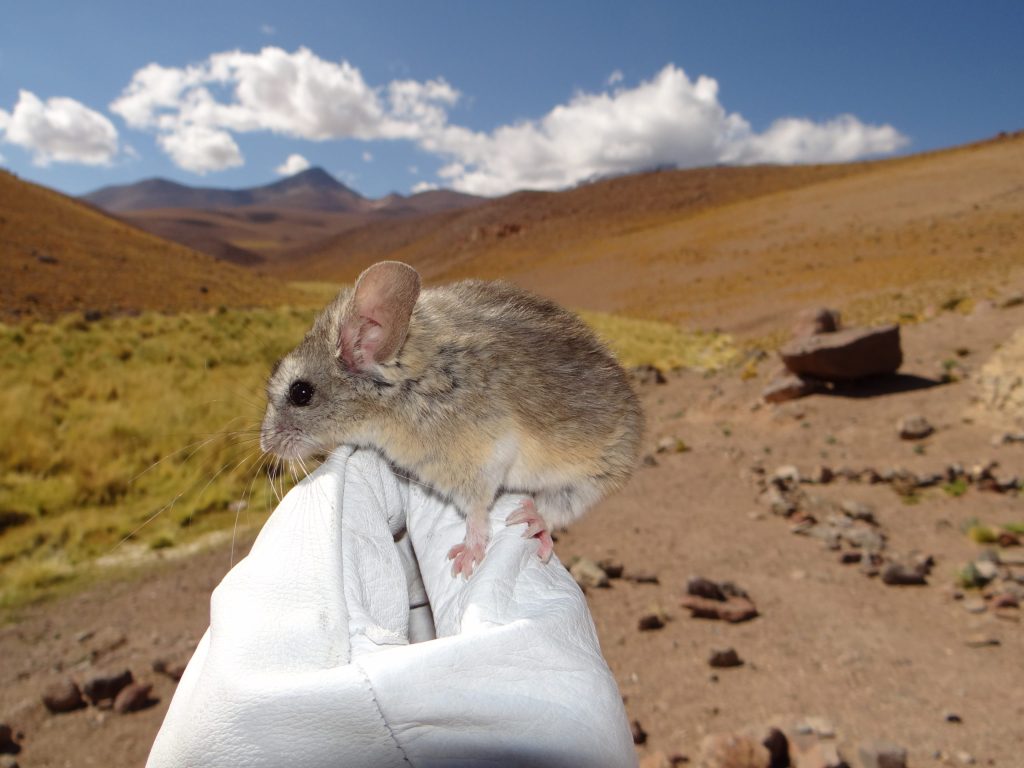A scientific expedition to survey high-altitude wildlife in northern Chile documented the world’s highest dwelling mammal, the yellow-rumped leaf-eared mouse (Phyllotis xanthopygus).
The record, published recently in the Proceedings of the National Academy of Sciences, was set with mice living at 22,110 feet.
As the paper notes, “This discovery suggests that we may have generally underestimated the altitudinal range limits and physiological tolerances of small mammals simply because the world’s high summits remain relatively unexplored by biologists.”
Of Mice and Mountaineers
In 2013, mountaineers took video of a mouse scampering across a snow field near the summit of Volcán Llullaillaco in the Puna de Atacama of northern Chile. The mountaineers shared the video with biologists who recognized that the mouse, apparently living above 20,000 feet, was surviving above what is generally accepted as the altitudinal limit for mammals.
This led to an expedition to explore Volcan Llullaillaco by biologists Marcial Quiroga-Carmona, Guillermo D’Elía, and Jay Storz, and mountaineering guide Mario Pérez Mamani.
“We wanted to conduct a systematic exploration of what species live in this under-explored area,” says Storz, Willa Cather Professor of Biology at the University of Nebraska-Lincoln. “These high-elevation regions are places so little explored by scientists and conservationists.”
The expedition conducted live trapping of small mammals from the Puna de Atacama, considered the world’s driest desert, to the summit of Llullaillaco. On the volcano, the world’s second-highest active volcano, the researchers set up a base camp at 16,500 feet, then camped a single night at 19,500 feet before attempting to summit.
As they reached their goal, they saw a mouse scurrying across rocks at the summit. “I was able to catch the record-breaking mouse by hand,” says Storz. “We were able to identify burrows. They were living there. This mouse was no fluke.”
Higher than Pika
Pika species living at 17,000 to 18,000 feet in the Himalayas were thought to set the limit for mammalian high-altitude living. The 22,110-feet home of the yellow-rumped leaf-eared mouse shatters that record.
This mouse, unlike pikas, is not a high-altitude specialist. In fact, the biologists caught this species at every location they live trapped, from sea level to the summit. “It means this mouse has by far the broadest elevational range of any mammal,” says Storz.
It makes it a species likely resilient to the effects of climate change, as there is literally no elevation where it can’t survive.

Life at high elevations is not easy. In fact, the researchers noted little available food near the summit where the mouse was found. “It’s perplexing,” says Storz. “The elevational limit of green plants is 16,000 to 17,000 feet. There were lichens but nothing else we could find for the mice to eat. There may be herbaceous plants hidden from view. We are interested in learning how they persist in a seemingly barren environment.”
Survival Strategies for Life at Altitude
Storz’s research focus is physiological adaptations that allow mammals and birds to live in the low-oxygen conditions of high altitudes. Animals that survive at these altitudes have evolved a suite of traits, from changes in breathing to circulatory system structure.
“We are sequencing the complete genomes of these mice,” says Storz. “It may help us identify genes that contribute to high-altitude adaptation.”
He also believes that discoveries like this should cause conservationists to take another look at environments that, at first glance, may appear barren or just “rock and ice.” The region explored by the expedition consists of the driest desert on Earth and a high-altitude volcano.
“At first glance, it’s very austere,” Storz says. “It looks almost Martian. If you took it at face value, it’s barren, and that’s how many describe it. But it’s remarkable how much life there is.”

Vicunas and guanacos, the wild ancestors of llamas, roam in large herds. There are predators like mountain lions and Andean cats. A diversity of birds thrives there. And mice scamper volcano summits.
“Even places not teeming with life have value,” Storz says. “And these are places that have been so little explored by conservationists.”
He says biologists have probably underestimated the range limits of many species. “Elevational limits are often based on anecdotal reports from mountaineering expeditions,” he says. “These high-altitude places have species with special adaptations, so there are conservation implications. A volcano summit above 22,000 feet may appear inhospitable. Actually, it is inhospitable. But there is still life there.”




Wow, that’s amazing. I really enjoyed reading this!
A very cool find and great story –thanks Matt.